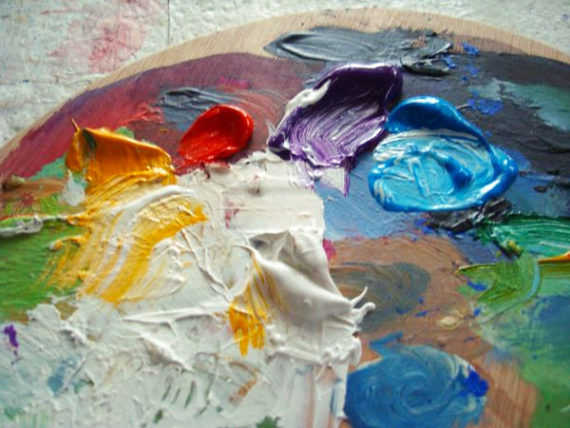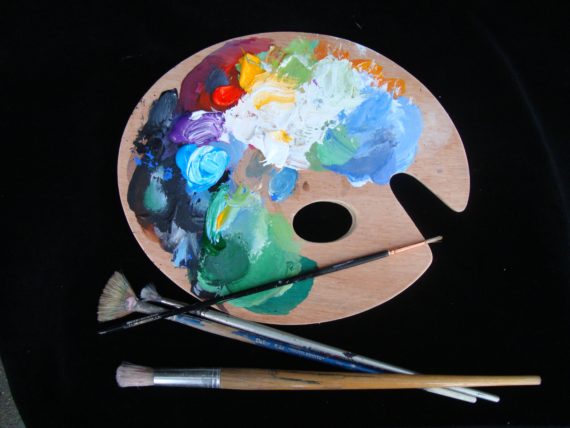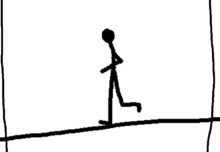FAT OVER LEAN
Fat over lean is a phrase that comes from traditional artist’s studios. It refers to the sequence that should apply when painting with oil paints.
Just like all paint, oils are a mixture of pigment, extender, and binder. Pigment is the colour, usually a powder. Plus the extender which is a neutral powder bulking up the pigment. The binder is the juice that holds it all together. In oils the binder is traditionally linseed oil plus a thinner or solvent such as turpentine.
‘Fat’ oil paint has more oil to solvent [and pigment] than a ‘lean’ mixture. The fat oily layer of paint would be more gooey, thicker, and glossy. Whereas lean paint would be duller and thinner and dry quicker.

lovely ‘fat’ acrylic paint
‘Fat over lean’ means that paint layers with more oil should go over the top of layers with less oil. The reason is that oil paints take a long time to dry. And more oily ‘fat’ layers take longer than ‘lean’ layers.
But if you paint ‘lean over fat’ the under layers might still be wet when the top layers are dry. As the wet ‘fat’ layer continues to dry it changes shape. The upper ‘lean’ layer is already dry and is no longer flexible. That causes cracking.
It is a similar rule to ‘thick over thin’. Thick oil paint will take longer to dry. The surface might be dry but it could be wet inside. Whereas thinner layers will dry quicker. If you paint thin over thick you will run the risk that the thick wet paint will dry slower and again cause cracking.
So another general rule for oil painters is ‘slow drying over fast drying’.
But everything has changed.
The rule ‘fat over lean’ was really important in those dim and distant times before the mass creation of convenient paint in tubes. Nowadays we artists do not have to grind our pigments, source our extender, and then mix our paint with oil and solvent before painting our pictures. Instead we pop along to the convenient artists suppliers and buy our ready-made paint in tubes.
Oil paint manufacturers are continually updating their products and they provide many paint versions. There are products that use quick drying oil, slow drying oil, different solvents, more pigment and less extender, etc.
It is now possible to paint with more freedom. There is a way to do what you want to do. Even lean over fat or thin over thick.
Reading the literature is important. Experimenting is important.

artists palette
Even more change…
The biggest development over the last 50 to 60 years has been the introduction of acrylic paint. In acrylics the paint still consists of pigment, extender, and binder. But in acrylics the binder is acrylic resin and the solvent is water. And water dries very quickly indeed.
So when acrylic paint became available to UK artists they found that you could paint with thick ‘fat’ paint that would dry very quickly. Then paint over the top with thin ‘lean’ paint. And it didn’t crack! ‘Fat over lean’ was an irrelevant ruling.
So with acrylics ‘lean over fat’ is possible. That means that if you trowel on thick acrylic paint, wait a few moments while you have a cup of tea, and then return to the painting… You will find that you can put a thin watery wash over the thick paint and create ‘glazes’. A couple of minutes later you can do the same again with a different glaze colour. Wow! That was never possible with oil paint.
Yet another technique is scumble. This is where the artist scrubs a thin layer of paint over a lower thick textured layer. Then wipes off much of the new paint layer leaving bits in the hollows making an interesting effect. The top layer of scumbled paint would probably be a bit fatter than a glaze. Scumble was possible using oil paint…. If you were willing to wait for ages between layers while they dried. But with acrylics scumble is very doable whenever you wish.
Scumble and glaze are both possible because acrylics dry so quickly. Also because acrylic paint is breathable and the under layers can dry through the top layers.
The studio world has changed. Fat over lean or lean over fat…huh!




